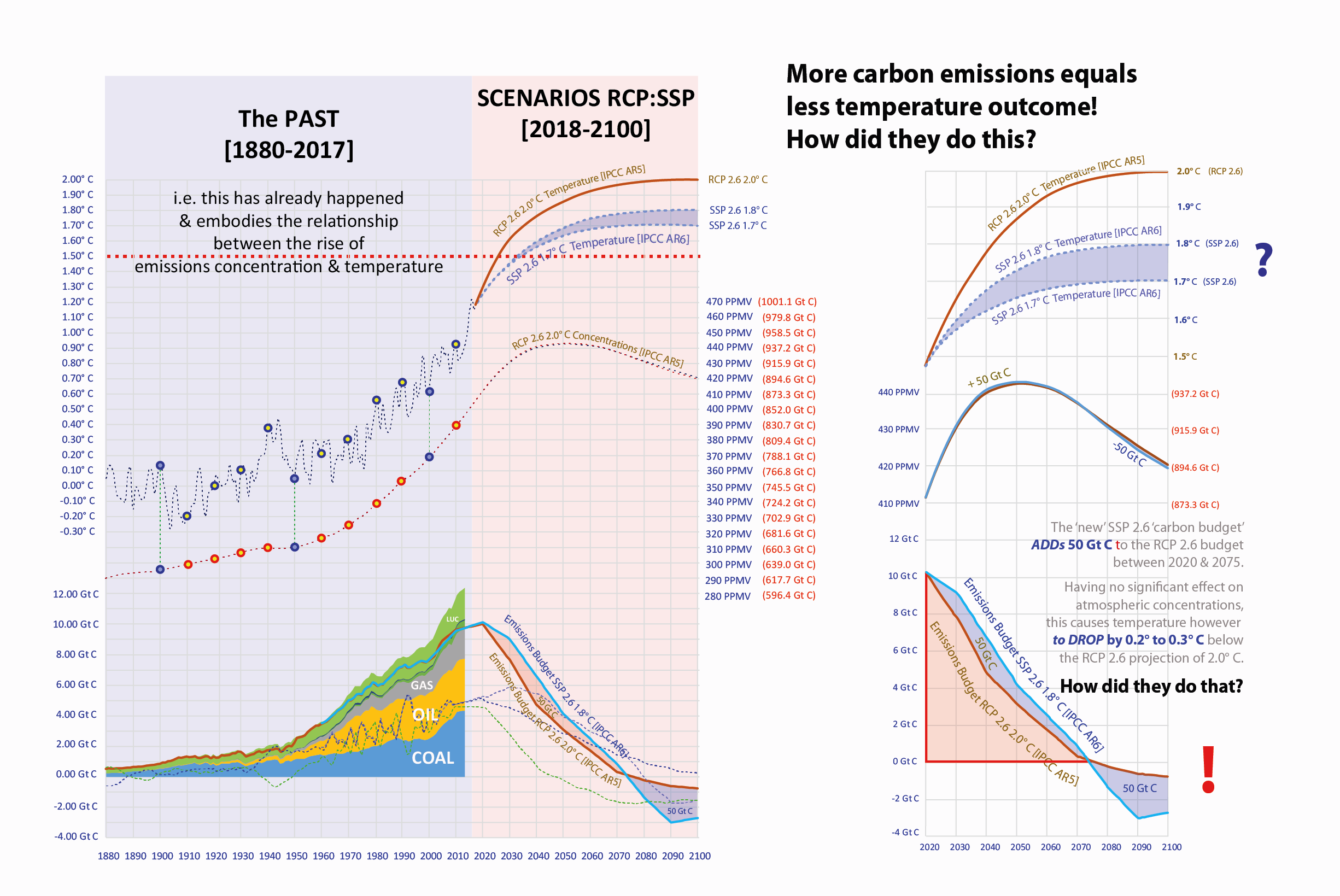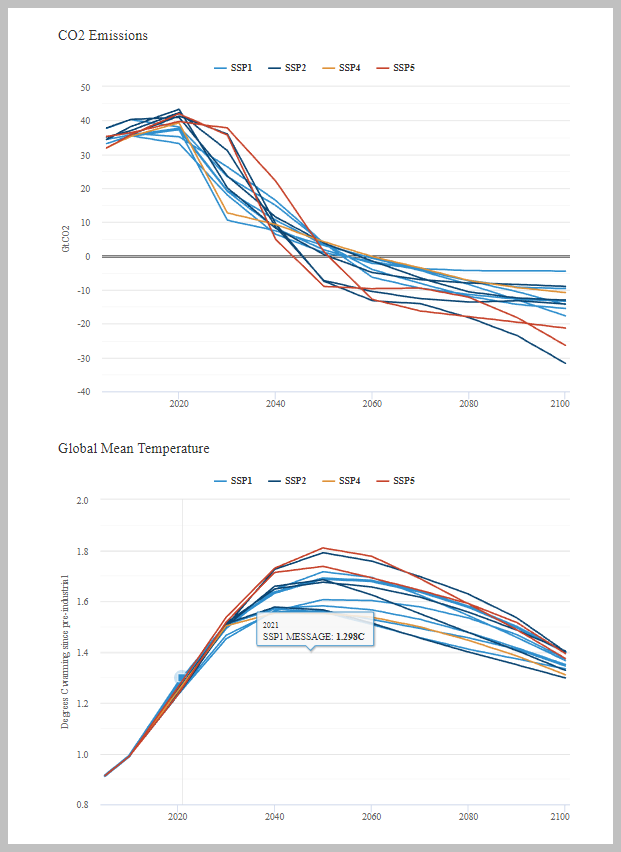IPCC 'Miracle' for AR6 - more carbon equals less temperature
Click logo to return to 'links-page'
IPCC's 5th Assessment Report (AR5 2015)
- showed RCP (Representative Concentrations Pathway) future CO2 emissions scenario 2.6 (coloured RED) falling after 2020
- with CO2 concentrations rising to 443 PPMV by 2050 then falling to 420 PPMV by 2100
- while slowing the rising temperature outcome to being stable at 2.0°C by 2100.
This seems to stretch plausibility due to omitted feedback effects during that time.
However, preparations for IPCC's 6th Assessment Report (AR6 due 2022?): -
- show the new SSP (Shared Socio-economic Pathway) scenario 2.6 (coloured BLUE): -
- which adds 50 Gt C (BLUE) to future emissions, barely altering CO2 concentrations,
- while this markedy increases the fraction-of-emissions returned,
- the fraction-of-emissions retained appears almost 'constant'
- together these are an improbably strengthened sink-function,
- while at the same time, this actually lowers the temperature outcome
- from 2.0°C to 1.7°C or 1.8°C by 2100 which seems wildly improbable.
Regardless of any debate about the sink-function, this truly seems to be wholly implausible.
How on earth is it possible to get a lower temperature outcome from more (not less) future CO2 emissions?
This new fascination with 'negative emissions' - 'technologies that suck CO2 out of the air' - is taking hold of all the SSPs that will dominate the output of IPCC AR6.
So after 30 years of IPCC Reports arguing the case for reducing emissions, at this moment of full crisis realization about accelerating rates of CO2 and temperature rise,
it is now a matter of concern as the feasibility, capacity, control & cost implications of these 'technologies that suck CO2 out of the air' are all disturbingly very great.
At this time they don't exist, certainly on any significant scale, so its a 'magic bullet'. If/when they do the cost of deployment would be exorbitant so who would pay for it and at what social cost?
SSP database here*************************************************************************

